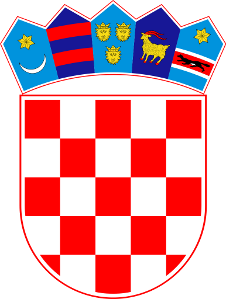Artists and arts organisations:
Take part in Season for Change 2020, a UK-wide programme showcasing cultural leadership on climate action
Led by Artsadmin and Julie’s Bicycle, Season for Change 2020 will be a major cultural festival and campaign celebrating the environment and inspiring urgent action on the future of our planet, in the lead up to the UN’s COP26 international climate negotiations in Glasgow in November 2020.
From June-November 2020, organisations and artists across the UK are invited to respond to the climate crisis through practical actions and participatory activities that spark public conversation about the future of our planet, and showcase solutions.
Co-created with organisations and artists across the UK, the programme will include digital content, new participatory commissions, performances, exhibitions, talks, film screenings, workshops and events. Together, we aim to reach over 10 million people, with participation from more than 250 arts and cultural partners.
Season for Change 2020 is supported by Arts Council England, which has partnered with Julie’s Bicycle for over a decade to support the cultural sector in reducing its environmental impacts and in 2012 became the first cultural body in the world to make climate action part of its funding agreements for National Portfolio Organisations.
Season for Change 2020 culminates on 9-19 November 2020 when the UK welcomes delegates from over 170 countries to Glasgow for COP26, the UN’s most critical climate negotiations to date. This will be an unmissable opportunity to showcase the creativity and leadership of the cultural sector on the most important issue of our time.
Season for Change 2020 aims to mobilise artists and cultural organisations to put climate action at the heart of their programming through:
- A programme of events and resources that will empower artists and cultural organisations to take action and inspire their audiences and communities.
- 15 flagship participatory commissions with 10 partners nationwide that engage diverse audiences with the climate crisis.
- A national campaign of events about climate change and the environment involving over 250 artists and arts organisations nationwide.
“There is quite simply no issue more serious and urgent than the future of our planet. Season for Change is about story and action – amplifying the multiplicity of voices of artists, audiences and communities across the UK, and equipping them with the tools to act collectively and as individuals.â€
Deborah Chadbourn, Executive Director, and Róise Goan, Artistic Director, Artsadmin
“This is the year for climate action. The UK, as host to the international climate negotiations, has an exceptional opportunity to make a big difference. Season for Change is for people from all over the country to connect to the climate crisis and make our voices heard at COP26. Come with us.â€
Alison Tickell, Founder and CEO, Julie’s Bicycle
“At the Arts Council, we believe arts and culture can make the world a better place, which includes building a more environmentally sustainable future. We are very pleased to be supporting Season for Change 2020, an ambitious and timely project which highlights the innovation, imagination and commitment of artists and cultural organisations responding to climate change, showcasing practical action and sparking valuable conversations with the public.â€
Nicholas Serota, Chair, Arts Council England
Season for Change will be delivered in partnership with arts and heritage organisations, artists and cultural agencies across the UK. Confirmed programme partners to date include Apples and Snakes, Cambridge Junction, Contact Theatre, East Street Arts, Happy Museum, Manchester Museum, Metal Liverpool, Sage Gateshead, Warwick Arts Centre, Watershed and academic partners such as the Centre for Climate Change and Social Transformation (CAST).
How artists and arts organisations can take part in Season for Change
Season for Change 2020 invites artists and cultural organisations to host events, artworks and actions across the UK that celebrate the environment and inspire urgent action on climate change, in the context of COP26.
Arts organisations, artists and others from the UK’s creative community are encouraged to go to the Season for Change website to:
- Sign up to our mailing list to receive event invitations, resources, updates and programme announcements.
- Tell us about any events or creative responses about environment/climate change you are planning for June-November 2020.
- Share with us touring work on this theme that we can promote to our networks.
- Share Season for Change with your networks using the hashtag #SeasonforChange2020
What kind of events, artworks and actions can be part of Season for Change? Creative responses can take place anywhere – in arts venues, on streets, in schools, at festivals, on beaches, in libraries or museums and across broadcast, film, fashion and music. We invite you to use culture to speak out, champion change, showcase sustainable practice and inspire action by doing things such as:
- Programme an event
- Commission new work
- Organise a debate
- Curate an exhibition
- Provide space for spontaneous performances
- Host an open call
- Make art, theatre, music, film etc.
- Turn your work inside out and show what you’re doing behind the scenes
- Support your community to take action on local environmental issues creatively
- Put climate change centre stage
Read the full press release
(Top image: METIS, WE KNOW NOT WHAT WE MAY BE, part of Season for Change 2018. Photo: David Sandison)



















